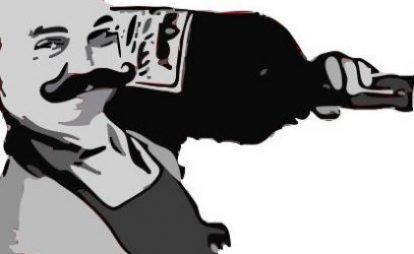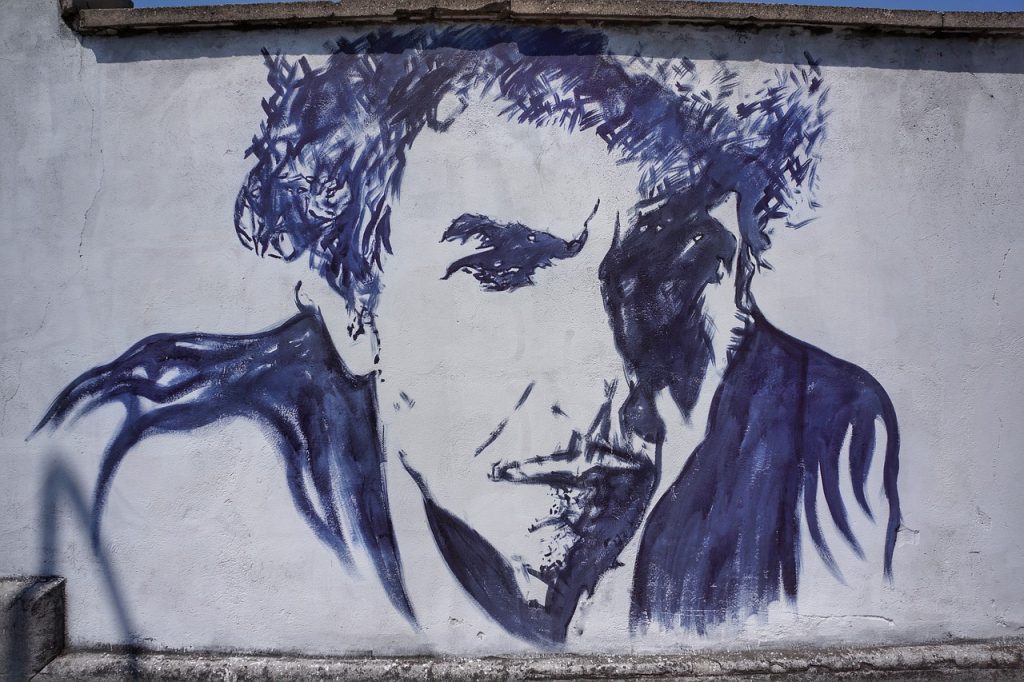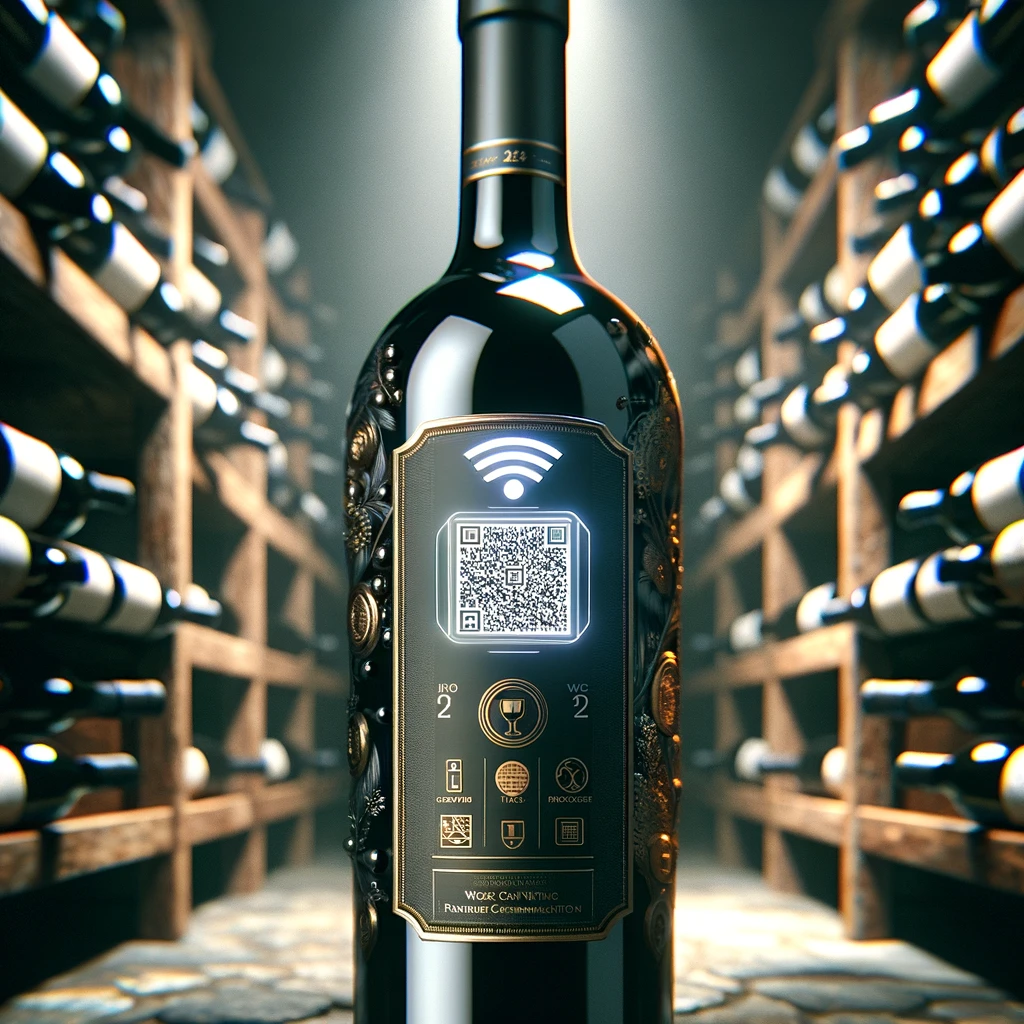The times are a-changin, Bob Dylan sang back in the sixties, but seldomly has the world of wine seen more change than in the past two decades and it is far from over. That is one thing we look at from different angles this week in the latest edition of the JollyCellarMaster Weekly. But, that is, of course, not all…
Italian Wineries, lots of M&A and the OIV Wine Book of the Year
An unholy communion
Please do not be afraid but read on! This isn’t about theological questions and whether you should believe in Jesus Christ, our lord and saviour.
Given the title and the fact that the JollyCellarMaster is all about wine, you might be inclined to believe that it’s about the role if the church over the centuries in shaping the world of wine as it is today. You could think of Burgundy and how it was formed by the Benedictines and Cistercians, Kloster Eberbach in the Rheingau, or Pope John XII and the story of Châteauneuf-du-Pape, just to name a few examples.
It’s not about that either though, but on a slightly lighter note, it is a story about the practical dangers of church going, the real and tangible danger that lurks in the buildings that have been erected in the name of God and the things they contain.
It happened on a quite Sunday evening, when passers-by were alerted by the cries for help from the church of Saint-Pierre in the city of Nancy in the Northeast of France. The calls were issued by a 28-year-old man who had been locked in the building for three hours.
One of the city’s security guards arrived at the scene, but almost immediately realized that it was more than a simple case of a locked door and notified in turn local police. When the policemen arrived, they liberated the man from his temporary prison only to find him extremely drunk. In fact, he had 3 g of alcohol per liter of blood, which he amassed by drinking mass wine for three hours while caught in the church. Or so, he said, at least. Since the mass wine in question must have been something rather decent – as you would expect in France – he decided to take three bottles with him when he made for the exit, only to find himself trapped. Seeing that he could not get out on his own, he broke down two doors in order to gain access to a room with windows. There he called for help and his calls were answered. A truly biblical story, isn’t it. Unfortunately, we don’t have any more information about what wine exactly he consumed, but to make up for his unholy behavior, the young man will have to do 60 hours of community service after he apologized and offered to help repair the damage he caused. Amen.
The Changing Structure of the Italian Wine Industry
It is often said that the wine industry in the last two decades has changed faster and more significantly than ever before. If you need a number to emphasise this, you could look to the latest stats presented by the industry body Unione Italiana Vini:
In twenty years, the number of wineries in Italy has decreased by over 500 000 from 791 000 back in the year 2000. During the same period, the area under vine has decreased by 11%, though mostly in the first decade since the drop was a mere 1% in the last ten years up to 2020. Naturally, the average is now considerably bigger, having grown by 174%, based on the last agricultural census of Istat, the Italian National Institute of Statistics, updated to 2020. The value of exports also increased, by 165%to be exact, and thus becoming the leading agricultural sector in foreign trade and one of the main contributors of the total trade surplus of Italy, where it accounts for almost 14%.
The highest decrease of wineries can be found in the central part of Italy, which lost 75%, while the north west, home of famed denominations of origin such as Barolo or Franciacorta, diminished by 70%. Taking a more granular look, among the regions it is Campania, which back in 2000 boasted the largest number of wineries with 86 000, today has just over 22 000 left, meaning a reduction of almost three quarters, though the percentual drop is the highest in Lazio -83%. According to the latest Istat census, that leaves Puglia with the largest number of companies with 36 000, followed by Sicily with 30 000 and Veneto 27 000.
The result of this structural change is fewer farms but with larger plots on average, especially in the North, where the average vineyard area is 3.4 hectares, compared to a national average of 2.5 as opposed to 0.9 in 2000 and 1.6 in 2010.
Global Consolidation
Since we are already talking about the changes in the structure of the wine industry, there were more news that are worth mentioning:
The first is about the latest sales of brands that were until last week owner by Constellation Brands, the Fortune 500 company. Wine-Searcher reports that the once largest wine company of the world continued its reduction of wine assets by selling its Cooper & Thief (Bourbon barrel-aged wines), 7 Moons, The Dreaming Tree, Charles Smith Wines and Monkey Bay brands to The Wine Group, one of the largest companies in US domestic wine sales.
Back in the late 2000s when it started an impressive spending spree that saw them add names like the Robert Mondavi Winery add to their portfolio, its strategy was distinctly focused on the $5 to $15 price range. Jump forward to 2022, the company issued a statement that reflects clearly the renunciation of the former approach as it is now “focused on competing predominantly in premium and fine wine and craft spirits segments”, as a company statement said this week.
The other interesting news is the merger that has sent shock waves across the French wine industry recently. It is about the Pinault and Henriot families, owners of Artémis Domaines and Maisons & Domaines Henriot respectively, which decided to pool their wine estates via a merger deal. According to Decanter, the Pinault family has a majority stake in the new group, which will retain the name Artémis Domaines and be managed by Artémis’ current MD, Frédéric Engerer. The families that own Maisons & Domaines Henriot are minority shareholders. As it is often custom in such operations, financial details weren’t disclosed.
It brings together a number of impressing brands of the French wine sector: Pinault has overseen an expansion of the Artémis wine portfolio since acquiring Bordeaux first growth Château Latour in 1993, which also consists of the grand cru Burgundy producer Clos de Tartin 2018, Napa Valley’s Eisele Vineyard, Rhône valley monopole Château Grillet, and Vosne-Romanée’s Domaine d’Eugénie as well as the recently acquired minority stake in Champagne Jacquesson. On the other hand, Henriot adds to the portfolio Burgundy’s Bouchard Père & Fils, founded in 1731 and a major vineyard owner and producer in the Côte d’Or alongside its négoçiant operations, plus William Fèvre in Chablis, Maison Henriot in Champagne and Beaux-Frères in Oregon. Very interesting, indeed, isn’t?
Recognition Well Deserved
And lastly, it is time to raise our glasses to the winner of the OIV Wine Book of the Year, Keith Grainger! He received Le Prix de l’OIV, the International Organisation of Vine and Wine, at La Cité du Vin in Bordeaux for his book “Wine Faults and Flaws: A Practical Guide”, which we talked about extensively here not so long ago in episode six of the JollyCellarMaster Podcast.
We also spoke about his career, another great book of his that should be on the reading list of any wine student, objectivity in wine assessments and much more, so if you really should check it out and you can find it here.
Back to his brilliant book, Wine Faults and Flaws, it really is the must-read reference on the subject as he explains everything you could think of from cork taint to TDN to Brett and much, much more as well as why faulty wines can be excellent… Go and read it!
—
And that is all for today. However, if you have an interesting story to tell or simply want to chat about wine as a guest on the Podcast, connect on Twitter or drop me a line. And if you want to stay in the loop about things happening at the JollyCellarMaster and the world of wine, make sure you sign up to our newsletter.
—
Disclaimer: As always, I’d like to be completely transparent about affiliations, conflicts of interest, my expressed views and liability: Like anywhere else on this website, the views and opinions expressed are solely those of the original authors and other contributors. The material information contained on this website is for general information purposes only. I endeavour to keep this information correct and up-to-date, I do not accept any liability for any falls in accurate or incomplete information or damages arising from technical issues as well as damages arising from clicking on or relying on third-party links. I am not responsible for outside links and information is contained in this article nor does it contain any referrals or affiliations with any of the producers or companies mentioned. As I said, the opinions my own, no liability, just thought it would be important to make this clear. Thanks!




